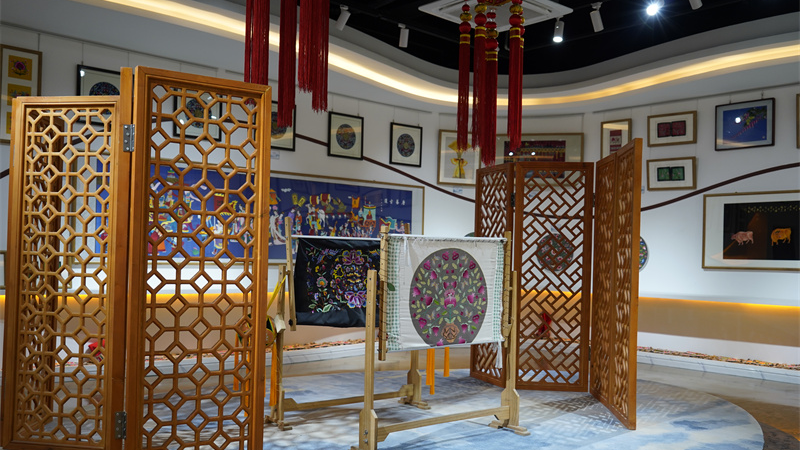Brain-computer interface sheds light on how human brain responds to live art
BEIJING, June 30 (Xinhua) -- Recent photos of Tsinghua University students wearing mysterious headgear dotted with silvery electrodes at a theatre performance sparked online buzz, with social media users joking about a "secret high-tech cult" or "quirky performance art," but the truth is far more groundbreaking.
The university revealed that these "magic caps" are actually key components of a portable brain-computer interface (BCI) system, designed to capture neural activity as students experienced live performances. The experiment was aimed at decoding aesthetic responses and exploring patterns of neural activity during art appreciation.
Gao Xiaorong, a professor at the university and director of Tsinghua's Neural Engineering Lab, confirmed that this marks "China's first application of non-invasive BCI technology in neuro-scientific research at a live performance venue."
Findings showed heightened activity in emotion and sensory processing regions during artistic engagement. "Live performances trigger stronger brain resonance linked to emotional immersion," explained Li Zexuan, a doctoral researcher who is part of the team. "This neuroscientific evidence reveals why live performances move us more deeply."
BCI technology, which captures and decodes brain signals to enable "dialogue" between mind and machine, has accelerated rapidly in China. Current applications range from medical diagnostics and high-risk job safety monitoring to motor rehabilitation and treating conditions like Parkinson's and epilepsy.
A key breakthrough in this series of studies lies in achieving laboratory-grade electroencephalography (EEG) data collection at a live performance venue through synchronous multi-group acquisition, Gao added.
The EEG caps worn by students contain silvery electrode interfaces to capture brainwave signals, while mini data recorders worn on their arms document emotion-related information. This data is wirelessly transmitted to a data center for analysis of physiological responses during artistic experiences.
A key question driving the research is how do performances and body language reshape our emotions and neural states?
Collaborations with universities and arts groups are underway to study art's impact on mood. "We aim to identify neural patterns in people suffering from emotional distress, such as anxiety patients, providing scientific references for emotional therapy," Gao said.
Photos
 Villagers enjoy fun sports meet in terraced fields in Chongyi, E China's Jiangxi
Villagers enjoy fun sports meet in terraced fields in Chongyi, E China's Jiangxi Artisan makes intangible cultural heritage part of modern life in Xining, NW China's Qinghai
Artisan makes intangible cultural heritage part of modern life in Xining, NW China's Qinghai View of Zangke river scenic area in Liupanshui, China's Guizhou
View of Zangke river scenic area in Liupanshui, China's Guizhou Beijing Flower Trading Center blooms into economic, cultural hub
Beijing Flower Trading Center blooms into economic, cultural hub
Related Stories
- China completes world's first interventional brain-computer interface experiment on human
- Chinese researchers develop flexible implantation robot for brain-computer interface
- Chinese scientists uncover complex blueprint of human brain cortex
- The brain-computer revolution unfolds
- China achieves breakthrough in BCI clinical trials, enabling patient to convert thoughts into text for communication
Copyright © 2025 People's Daily Online. All Rights Reserved.





